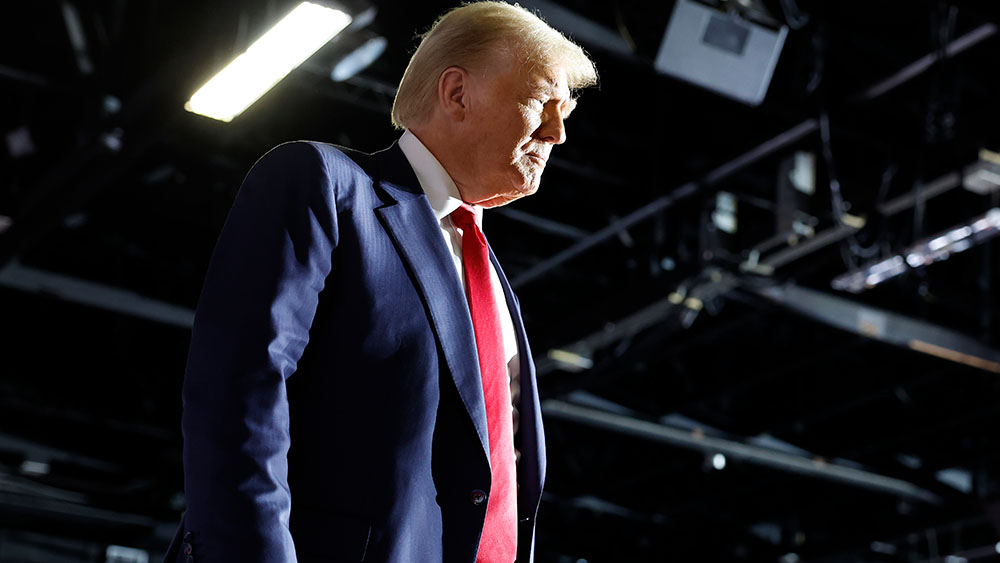Articles appear daily touting the benefits of blueberries, chocolate, red wine, olives, grape seeds/skin and thousands of other herbs, oils, extracts, spices and ferments. These are usually accompanied by strange words like
quercetin,
anthocyanins, flavonoids and tongue twisters like epigallocatechin that fly over the head of average people just trying to improve their health. Few look any further, much less review the actual chemistry involved.
(Article republished from
GreenMedInfo.com)
Science is finally beginning to recognize the role of oxidative stress in all disease (yes, that includes cancers, heart, joint, diabetic and other conditions). Unless you zero-in on this concept you will wander the wilderness of medical literature and never find healing. As fully described in my
previous GMI articles, antioxidants quantitatively oppose oxidative cell damage to restore functionality as part of an overall protocol.... And polyphenols are a particularly effective class of antioxidant that protects unsaturated fatty acids and cell membranes from crippling and unrelenting attack by highly destructive hydroxyl radicals.
The book Forbidden Healing translates and organizes basic cell physiology and chemistry into simple terms that can be applied inexpensively and effectively by physicians and the growing number of people seizing personal responsibility for their own well-being and survival. Conventional medicine fails to recognize or address the true cause of disease, so it is incumbent on the individual to focus on practical apps and become the mechanic that maintains his organism. Polyphenols and antioxidants in general are essential tools in the maintenance of body charge, oxygen delivery, bioenergy production and the preservation of the integrity of all bio-molecules. As a sidelight, research into immune pathways has found that the polyphenols in curcumin and
resveratrol have an affinity for
cannabinoid receptors CB1/CB2 as do alkamides found in echinacea and of course THC, CBD, etc. found in cannabis itself. CB1/CB2 activation appears to go far beyond the "un-suppression" of immune cells. These receptors express in malignant tumors and a wide variety of lung, liver, kidney, bone, brain tissues and are neuroprotective offering a broad avenue of treatment possibilities for cancers, osteoporosis and brain injury to name a few.
Antioxidants are a broad range of biochemicals that counter acids, oxidants and cell-crippling hydroxyl radicals. Hydroxyl radicals are formed by the Fenton reaction of H2O2 with metals like ferrous iron in your blood or with mercury and cadmium (which shouldn't be there). Hydroxyl radicals are vicious oxidizers and once set loose, initiate a chain reaction that begins oxidizing the unsaturated fats of cell membranes in a stealthy attempt to suffocate and isolate the cell from oxygen and nutrient material transport. The damage also cripples DNA expression, DNA/telomere integrity, cell division, immune function and critical enzyme production which lie at the root of disease.
While the ABCDEK vitamins, healthy fats and internally produced antioxidants like uric acid, glutathione, SOD and catalase oppose oxidative stress/inflammation by supplying electrons, it is the colorful polyphenolic pigments that halt hydroxyl radical initiated chain reactions.
Coffee, tea, pomegranates and parsley are few common food items that contain polyphenols, as do super concentrated therapeutic supplements like curcumin, oregano oil, algae, bee propolis/royal jelly and capsaicin. Polyphenols comprise thousands of plant-derived chemicals that contain aromatic carbon ring structures. Carbon rings contain an abundance of electrons in highly varied geometries, side-chain functional groups and polarities allowing association with cell membranes, and "poly-" means lots of them. This gives polyphenols the ability to insulate membranes at their fluid interface from oxidative devastation via their key quality of thwarting hydoxyl attacks.
So when a food contains phenolic acids, flavonoids, flavones, stilbenes, and lignans, pay attention! These are the polyphenols that represent value far beyond the ABC vitamin contents usually credited with a specific food's health benefits...simple chemistry. Gather the rainbow of polyphenols and bring them into your kitchen.
- Phenolic acids are found in berries, tea leaves, onions, coffee and in whole grains, with heirloom maize being a rich source.
- Flavonoids are present in many fruits and green leafy vegetables like onions, kale, broccoli, cabbage, and in red wine and tea.
- Flavones are found in parsley, celery, tomatoes and the skin of citrus fruits.
- Isoflavones are deemed phytoestrogenic due to their molecular similarity to the hormone and are found in leguminous plants like soybeans.
- Flavonols come in red wine, green tea, chocolate and many fruits.
- Anthocyanins are easy to spot in red, blue or purple berries, fruits and vegetables.
- Lignans are prevalent in flaxseed, algae, lentils, wheat, garlic, asparagus and carrots.
- Stilbenes include the highly valuable anti-ageing compound resveratrol, found in red grape skins and Japanese knotweed (Fallopia japonica).
Agricultural style, handling, processing, storage and cooking all influence the qualities of nutrients. Absorption of polyphenols is dependent on stomach pH, gut bacteria, fiber intake and the food matrix of a meal. Alcohol and the use of fermented sources enhance availability.
So the job of the health mechanic is clear: eliminate sources of inflammation and oxidative stress.
- Clean the system of metals like mercury, cadmium, aluminum, arsenic, lead and excess copper.
- Reduce susceptibility to hydroxyl-forming free iron leakage by dumping stored ferritin/iron overloads via occasional blood donation.
- Maintain high intakes of Vitamin C, E-tocopherols/tocotrienols, NAC (N-Acetyl Cysteine), RALA (R-Alpha-Lipoic Acid) and carotenoids, along with appropriate mineral intake of potassium, magnesium, zinc, selenium, sulfur and iodine. Vitamin C is the handy electron source that dampens oxidative stress and the oxidation of metals which provoke hydroxyl radical generation.
- Earthing, sunshine, breath work, hyperthermia, intermittent/green juice fasting and the use of structured charged waters add to a protective electron-rich cellular environment. Electrons from any source migrate to the strong hand, so behind the scene, health and healing depend on a quantitative balance sheet similar to a checkbook. Ingested and metabolically produced and protected electrons raise the balance while wrong foods, metabolic wastes, environmental toxins and emotional stress drain the account. And like the bank account, a minimum balance accrues no penalties, but insufficient funds require a large deposit to stay out of jail.
- Use toxin chelators such as leafy greens, cilantro, chlorella, shilajit and clays.
- No one can remember all the great polyphenolic compounds that preserve our cell molecules, but they are the active compounds in most of the high ORAC (oxygen radical absorbance capacity) therapeutic foods, herbs and spices encouraged throughout natural health literature. One can also do a reverse look-up following ORAC tables where high scores usually betray the presence of the most powerful antioxidant and polyphenol content in foods. GreenMedInfo.com is the place to cross reference all the individual sources and their effectiveness in specific health conditions.
Peruse my other GMI articles for details on detox and our electrical nature.
Since medicine took a wrong turn into dead-end pharmaceutical thinking during the last century, we tend to focus on a single substance to cure illness. Today science seems mystified by the effectiveness of acupuncture, electric brain stimulation, electronic diagnosis/treatment, laser therapies, oxygen therapies, earthing and frequency medicine because they are not "drugs." We also have trouble understanding that electron flow can be created (bio)chemically, though we all have a battery in our car. Our cells and bodies are batteries, too, and require water, electrolyte minerals, food and oxygen to maintain a healthy voltage. When those conditions are not met we succumb to "The Disease", oxidative stress, better known as inflammation, where electron-draining oxidation overwhelms electron ingestion and metabolic production. So health and longevity ultimately depend on eliminating electron loss while promoting electron intake and generation. When the car won't start, don't reach for a drug, use the jumper cables.
Polyphenols may act as the safety net where nasty electron-stealing hydroxyl rads go to die, but see the big principle: "Life is Electrical!" It's all a balance.
Read more at:
GreenMedInfo.com
 Parler
Parler Gab
Gab










